RECORD has asked contributors to the 2008 Venice Biennale, which runs through November 23rd, and members of our staff to recommend places to go—beautiful squares, forgotten buildings, beloved eateries—while in town for the exhibition.
Designer and Professor of Architecture, Royal College of Art, London
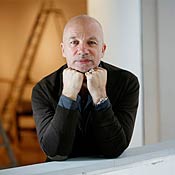 |
|
Image courtesy Nigel Coates Nigel Coates |
For a genuine “slice of Venetian life,” Nigel Coates suggests visiting the Via Garibaldi, once a canal but now one of the few places in Venice not “overrun with the trappings and mentality of tourism.” He has two suggestions for spots to dine on the street: The Trattoria il Giorgione “for a straightforward meal swilled down with a bottle of Tokai,” or Il Nuovo Galeon “for something special.” With its “inventive fish dishes and great wine list,” Coates considers Il Nuovo Galeon one of the top restaurants in Venice.
If you have an apartment with a kitchen during your stay in Venice, check out the Viale Garibaldi. “Venice’s only tree lined avenue,” it runs perpendicular to the Via Garibaldi and is home to vegetable markets and fish stalls where you can buy “magnificent fresh fish every morning.”
Principals, Penezić & Rogina Architecture
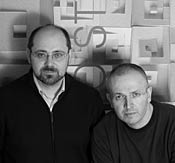 |
|
Image courtesy Penezić & Rogina Architecture Vinko Penezić and Krešimir Rogina |
Penezić and Rogina recommend several local spots unlikely to be populated with other tourists. First on their list, with an “exquisite selection of wines along with excellent food, service, and atmosphere,” is the wine bar Enoiteca Mascareta, located on the Calle Lunga S. Maria Formosa, 5183. (Call them at 041 5230744, of visit them on the web at www.ostemaurolorenzon.it). If you don’t mind a little kitsch, you can stay nearby at Loscanda Ca’ del Console, which offers “Venetian ‘thematic’ rooms” and a “modest but fresh and tasty breakfast.” More information about this inn can be found here: http://www.locandacadelconsole.com/en/index.html
Considered a “great public space” and one of the world’s best squares by the Project for Public Spaces, the Campo Santa Margherita, located in the Dorsoduro district, is also one of Penezic & Rogina’s favorites. With its vibrant mix of residences, shops, markets, and bars that always draw a crowd of locals, the square offers a “fantastic multi-sensorial experience.”
Partner, Massimiliano Fuksas Architect
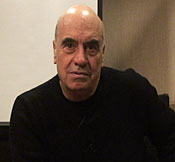 |
|
Image courtesy Bryant Rousseau Massimiliano Fuksas Principal, Fuksas Architects |
A city of the sea, Venice offers incredible seafood if you know where to find it. Ask Massimiliano Fuksas where to go, and he’ll direct you to Corte Sconta, a refined restaurant that nonetheless “keeps a popular spirit.” Seafood is Corte Sconta’s raison d’etre, and everything they serve was caught the same day. You can find the restaurant on the Calle del Pestrin 3886, or call them at 041 522 7024.
Partner, Philippe Rahm Architects
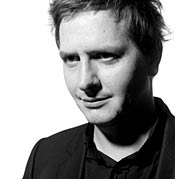 |
|
Image courtesy Philippe Rahm Architects Philippe Rahm Principal, Philippe Rahm Architects |
Take a break from the bustle of central Venice and follow Philippe Rahm’s recommendation to Pellestrina Island. A long, thin, strip of land that serves as a barrier between the city and the sea, Pellestrina is itself protected from the surf by 20 kilometers of murazzi, walls built of Istrian stone in the 18th century. While on the island, check out Trattoria Da Nane, which Rahn calls “the best fish restaurant of the laguna.”
Rahm also recommends a visit to the Scuola Dalmata di San Giorgio degli Schiavoni, located on the Calle dei Fulani. With a façade designed by Giovanni de Zan in the Sansovino style, the Scuola falls into what Rahn calls “a beautiful, forgotten typology” somewhere between public space, school, and club. The Scuola is worth visiting not just for its architecture but also for its art: a series of Carpaccio paintings can be found inside.
Deputy Editor, Architectural Record
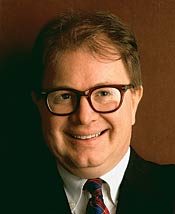 |
|
Image courtesy Charles Linn Charles Linn |
Charles Linn points visitors toward La Fenice, the Venice Opera House that burned to the ground in 1996 and reopened in 2003 with restoration and redesign by Aldo Rossi. He notes that the building’s destruction and subsequent reconstruction feature at the center of John Berendt’s work of non-fiction, The City of Fallen Angels.
Also on Linn’s list of recommendations are a trip to the Lido, an island east of Venice whose beaches are “some of the most beautiful in the world,” as well as a visit to the famous Piazza San Marco, where you can see the Basilica di San Marco—“it’s mosaics are incredible” Linn says—and take a climb to the top of the Orologio for panoramic views of the city.

Post a comment to this article
Report Abusive Comment